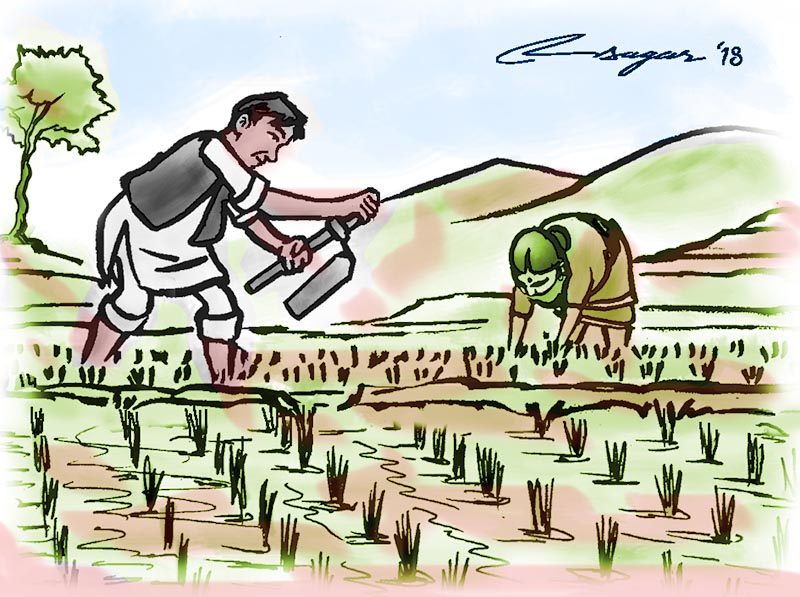Conservation agriculture: Misperceptions and challenges
CA is often promoted as a technology particularly suited for dry areas and as a way of combatting drought, but this does not mean it is not applicable in medium and high rainfall zones, or on farms under irrigation
Conservation agriculture (CA) is about maximising farm profits in the long term by optimising agricultural production while conserving inputs, such as labour, fuel, seeds, fertiliser and pesticides, and minimising or mitigating any impact on the natural resources — soil, water and air. There are, however, misperceptions about the CA, some of which have been spread by academics, farm advisers and researchers. Part of this misperception is the belief that crops cannot be successfully planted and established without tillage, especially on hard or stony soils. CA is often promoted as a technology particularly suited for dry areas and as a way of combatting drought, but this does not mean it is not applicable in medium and high rainfall zones, or on farms under irrigation.
While keeping the residue undisturbed is the best practice, there is little evidence to suggest that zero tiller (ZT) disc seeders, which disturb a very small soil surface, provide superior crop performance to ZT line seeders, which disturb more soil. Often, farmers and researchers use a ZT seeder which is either not suitable for the conditions or is incorrectly set up and calibrated, and hence, poor establishment and crop growth results. In the absence of better knowledge, they conclude that ZT does not work well.
Some researchers and extension specialists believe that soil cover is a critical part of CA, and without it farmers will not benefit from the adoption of other principles. While there is evidence to support this in eastern and southern Africa, this does not hold true in all places. Significant benefits were recorded by farmers in Syria and Iraq solely with ZT and early sowing, even when crop residues were heavily grazed and crop rotation was dominated by cereals. There is also evidence to suggest that light grazing of residues may provide useful benefit to livestock while the remaining residues help protect the soil from erosion and maintain soil fertility. Problem is seen in allowing farmers to maintain livestock grazing during the transition to CA, which enables a much more attractive and low risk package, without challenging the economic stability of their existing crop-livestock systems.
Many farmers complain that legumes and other alternative crops require more work, and their yields are lower compared to cereals. While the yield of these alternative crops is usually lower than cereals, this is often offset by higher prices, although production costs can also penalise legumes and other crops. More than ever, a farming systems approach is required to successfully conduct a CA production system. There is much that needs to be done to develop and promote more profitable legumes and alternative crops. Managing two or more different types of crops in CA adds complexity to farm management and can be hard work, but some farmers manage these issues effectively because they can see how crop rotation is important for the long-term profitability of their farms.
An effective fallow can conserve moisture from one season to the next and benefit the following crops in low rainfall environments. However, the benefits are inconsistent, and often much of the soil moisture is lost through evaporation during the long hot and dry summers. Most studies show that on average the extra yield of the crop, following the fallow, does not compensate for the total yield that would have been produced by growing a crop every year instead of letting the land lie fallow. Likewise, the increase in soil fertility during the fallow phases is typically small. Instead of using a fallow phase, farmers in low rainfall areas are better off planting a crop every year. The risk of crop failure due to drought is decreased in CA systems because soil evaporation is reduced, and rainfall infiltration and water-use efficiency are increased. So this should give farmers the confidence to replace fallow with a CA crop, ideally a low-cost food or forage legume.
There is a misperception regarding the need of inputs, especially pesticides, in CA. If the overall burden of weeds, diseases and other pests is similar, then there is no greater reliance on pesticides in CA compared to conventional systems. In general, post-emergent applications of herbicides, fungicides and insecticides will be similar in CA and conventional systems. In all cases where ZT is adopted, there are significant reductions in fuel and labour costs, and also savings in seed inputs are likely. If legumes are added to the rotation, organic nitrogen can be more available, and in some cases phosphorus fertilizer can also be decreased. Under irrigation, less water is often required.
Some farmers, academics and others consider tillage or seedbed preparation as a key operation for a successful crop and that ZT contradicts their agricultural culture and heritage. Farmers who don’t till their fields are sometimes labelled as lazy, messy and not serious. These people are often not open to change, and are difficult to argue with. But most farmers listen to other successful farmers, and the early adopting farmers need to be supported and included in CA promotion activities.
A gradual process of evidence-based assessments and empowerment with accurate information supporting a fitting alternative can soon lead to a changed mindset. How can we expect to improve our farm productivity without trying something new?
Thapa is with Digo Krishi


